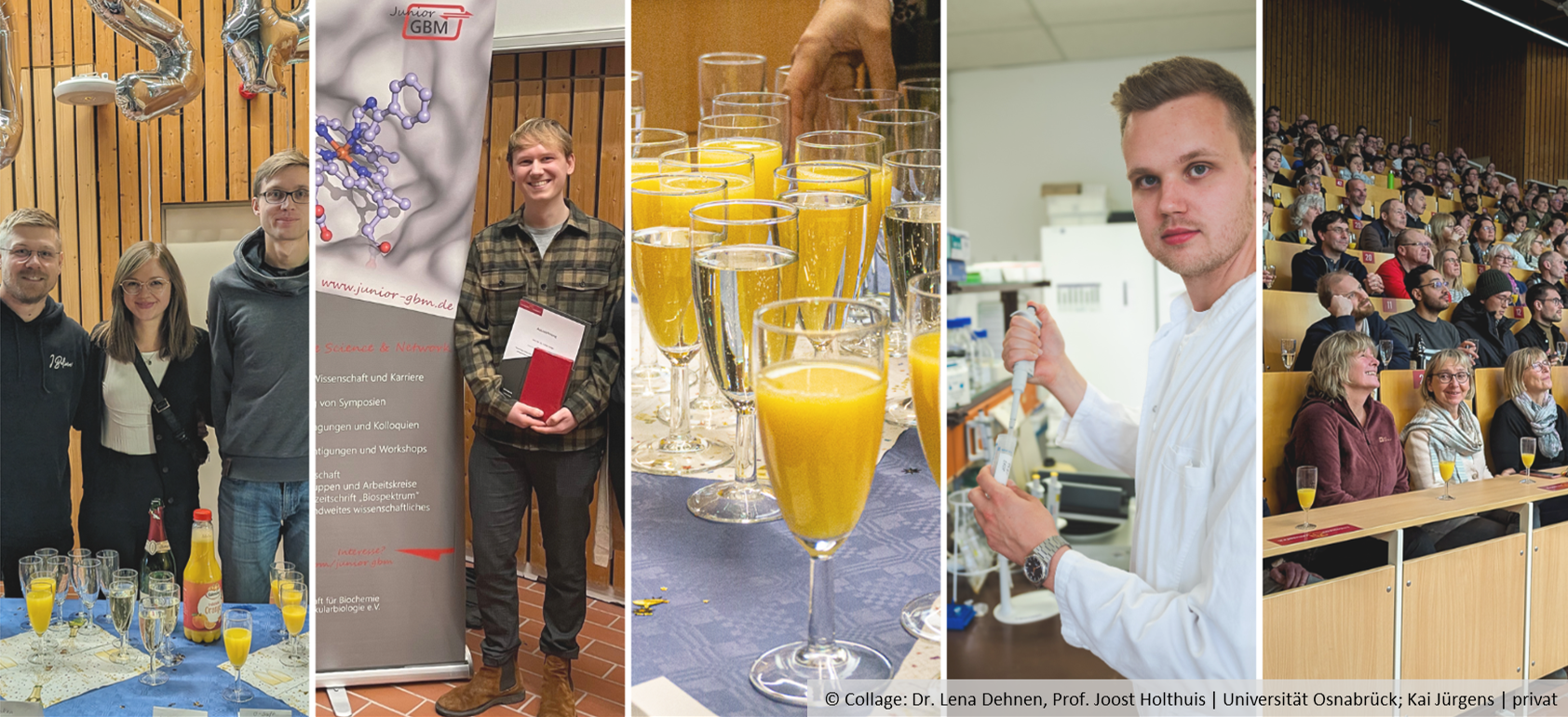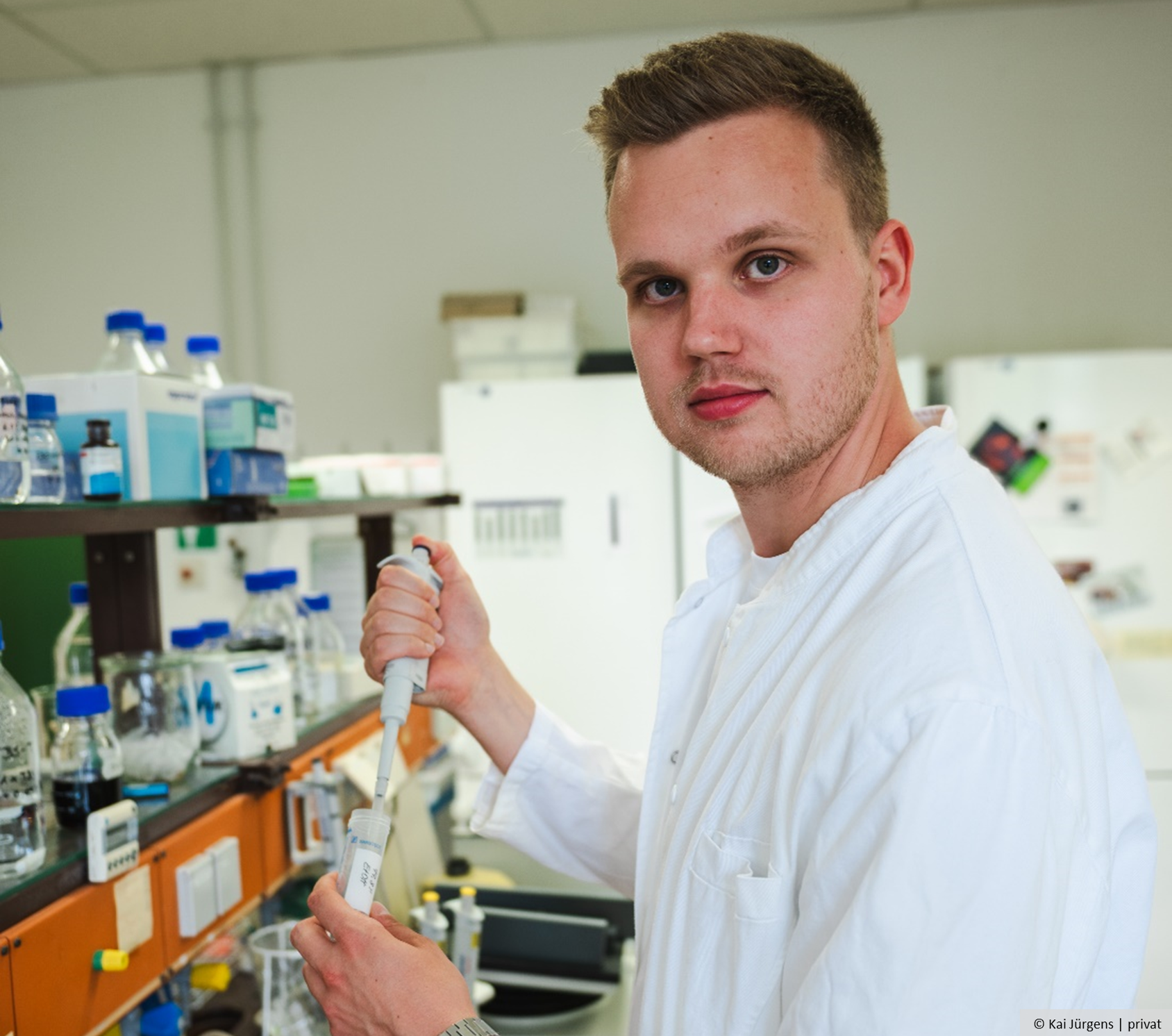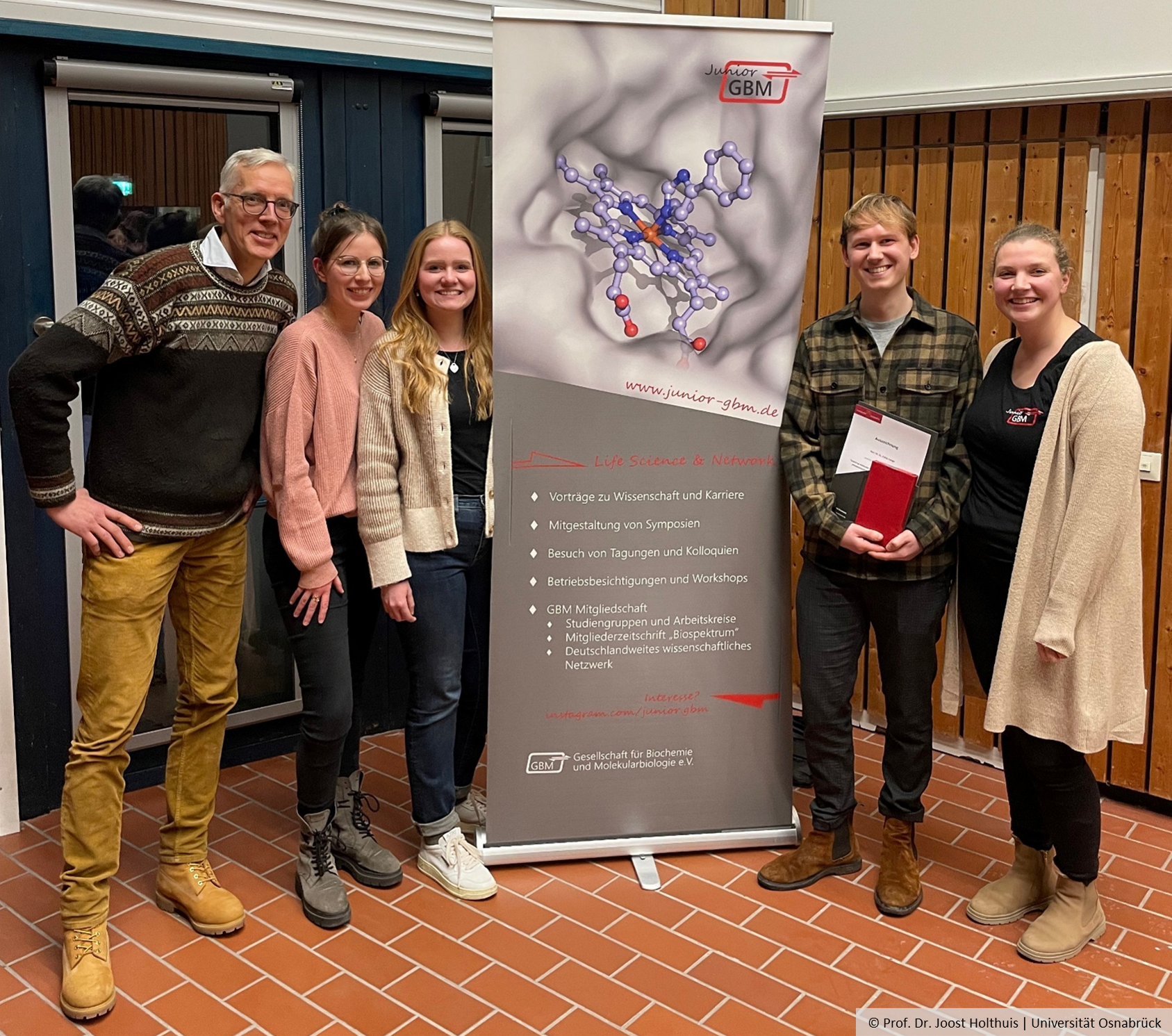Main content
Top content

01.02.2024
Throwback at the New Year's event: These were the best Master's theses of 2023
Osnabrück Biology awarded prizes for the three best Master's theses of the previous year in the categories "biochemical-molecular" and "organismic" as part of its New Year celebrations. The prizes were donated by the Biology department and the Society for Biochemistry and Molecular Biology (GBM). We warmly congratulate Kai, Fabio and Sabrina!
First, however, the acting Dean Prof. Dr. Sabine Zachgo (RG Botany) led the guests, celebrants and other interested parties through the events of the past year in the large lecture hall of the School of Biology and gave a foretaste of the developments to be expected in the coming months. During the ceremonial address, the Master's students who had completed excellent theses were also honored with a short laudation by their supervisors.
Kai Jürgens – „Atlas of Drosophila Anatomy“
Kai Jürgens received this year's award in the category "Best Organismic Master's Thesis". In Prof. Dr. Achim Paululat's research group (Zoology-Developmental Biology), Kai used scanning electron microscopy to capture high-resolution and aesthetically pleasing images of the fruit fly Drosophila melanogaster as part of his Master's thesis. In his master's thesis, entitled "Atlas of Drosophila Anatomy", he compiles his impressive image material of a multitude of anatomical details. Based on the images compiled by Kai, a scientific manuscript has been submitted to the highly renowned journal "Genetics" for publication. We hope that the international Drosophila community will soon be able to benefit from a new image atlas with Kai as first author in research and teaching. Incidentally, one of his images, a frontal view of the head, has already won the image competition of the microscope manufacturer JEOL in 2022.

After completing his Master's thesis, Kai Jürgens began his doctoral research in the Zoology-Developmental Biology research group (headed by Prof. Dr. Achim Paululat) and is now investigating a point mutation in a gene of the fruit fly Drosophila melanogaster, whose human counterpart (homolog) can lead to heart muscle disorders in humans.
Fabio Lange – „Exploring molecular crosstalk between sphingomyelin and phosphoinositide-dependent lysosomal repair using organellar proteomics”
This year's GBM Master's Prize went to Fabio Lange, who researched the complex repair mechanisms of damaged lysosomes under the supervision of Prof. Dr. Joost Holthuis (RG Molecular Cell Biology). In the course of his Master's thesis, he also succeeded in establishing a new experimental protocol that enabled him for the first time to isolate damaged lysosomes in such a way that they could subsequently be analyzed by mass spectrometry. In this way, Fabio gained a new insight into the protein composition (proteomics) of defective cell organelles and his protocol has already made big waves within the scientific community.

Fabio Lange (2nd from right) has won the GBM Master's Prize with his Master's thesis. The prize was awarded by Prof. Dr. Ungermann (left) and representatives of the Junior GBM.
Sabrina Wilkening – „Evaluation of self-labeling enzyme dyes for correlative in-resin light and electron microscopy“
This year, in addition to the two traditional Master's prizes, there was a special GBM prize for the first time, which was intended to honor another particularly outstanding Master's thesis. The special prize was awarded to Sabrina Wilkening for her excellent Master's thesis under the supervision of Prof. Dr. Michael Hensel (RG Microbiology).
In this thesis, Sabrina addresses an essential problem in the application of correlative light and electron microscopy (CLEM), a state-of-the-art microscopy technique that combines light and electron microscopy to determine the nanometer-precise localization of proteins in subcellular structures. In a first step, so-called fluorophore tags, i.e. fluorescent markers, are used in living cells to identify the proteins to be examined. After light microscopy, the samples are fixed for electron microscopy in order to correlate the two images with each other and thus place the labeled proteins in the structural context of the cell.
The problem: the elaborate fixation methods for electron microscopy change the structure of the sample, and a precise correlation of the two images is not always exact. In addition, most fluorophores lose their effectiveness during sample fixation.
In her master's thesis, Sabrina established an application-safe protocol that uses synthetic, self-activating fluorophores that survive fixation. This allows light and electron microscopic images to be recorded after fixation and without discontinuity, ensuring reliable correlation of electron and light microscopic images. The development of such a protocol to improve correlative light and electron microscopy significantly improves the output of correlative microscopy studies and will certainly find application in numerous studies.
We would like to congratulate Kai, Fabio and Sabrina on their outstanding theses and wish them all the best for their professional careers!
Prof. Dr. Christian Ungermann is organizing the call for entries for the Master's prizes. Osnabrück biology lecturers are invited to nominate excellent Master's theses under their supervision, and a jury of lecturers will then select the best theses.
Click here to go to the website of the Junior GBM







